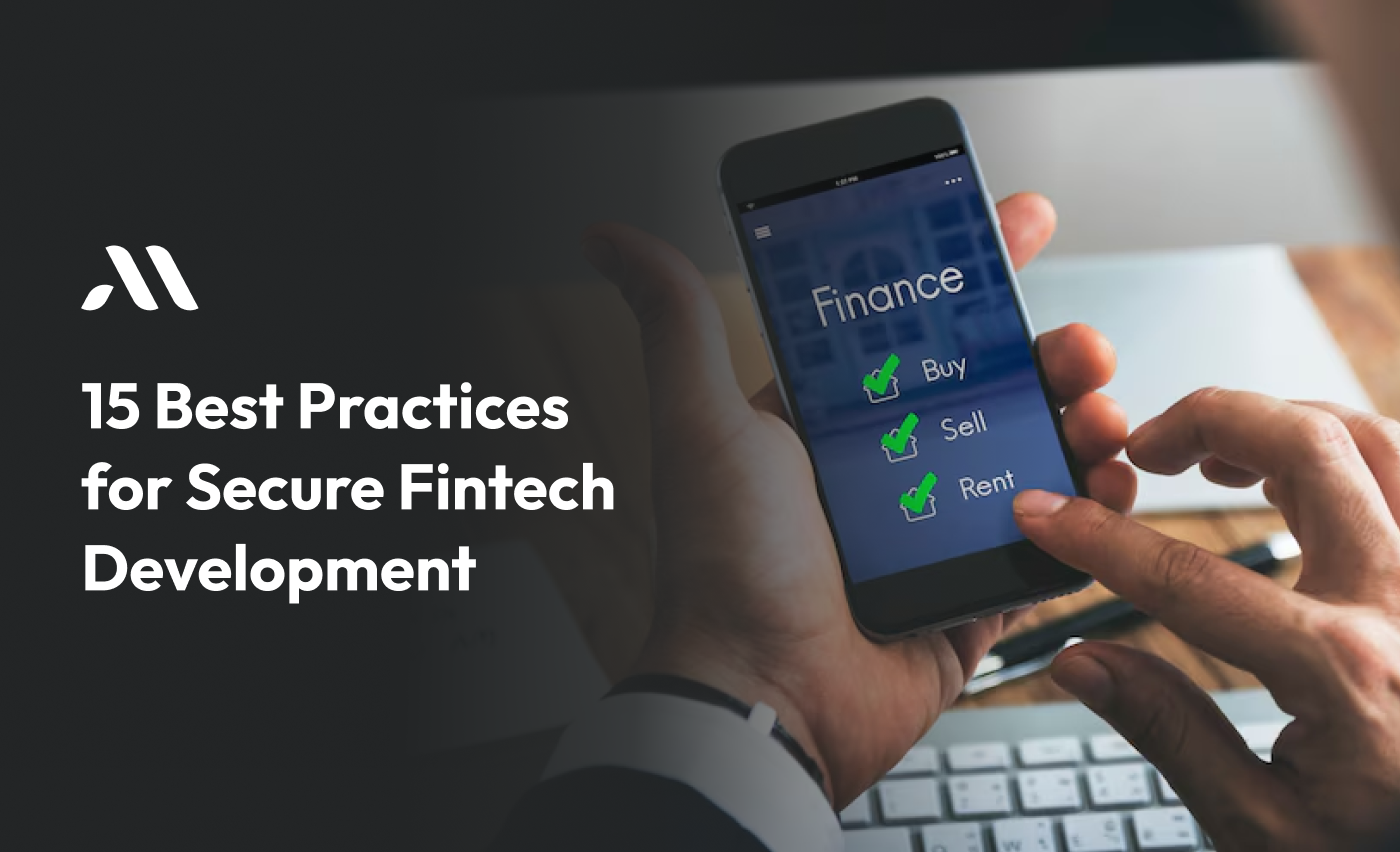Introduction
In today’s world, where technology and finance go hand in hand, keeping your fintech application secure is important. If you are a fintech business owner or thinking about starting one, you need to understand the best practices for secure fintech development. This article will guide you through 15 key practices to ensure your fintech application is safe and trustworthy. Let’s jump in!
Best Practices for Secure Fintech Development
1. Start with a Secure Design
When building your fintech app, start with a strong, secure design. Think about security from the beginning. It’s much easier to build security into the system at the start than to add it later. A secure fintech development design will help you avoid many problems down the road.
Tip: Work with the Best Fintech Development Company to get a secure design right from the start.
2. Use Strong Authentication Methods
To keep your users’ data safe, use strong authentication methods. This means using multi-factor authentication (MFA), which requires more than one form of verification before allowing access. For example, users might need to enter a password and a code sent to their phone.
Note: Strong authentication methods are a key part of secure fintech development. They make it much harder for unauthorized users to access sensitive information.
3. Encrypt Sensitive Data
Encryption is like putting your data in a secure vault. It turns readable information into unreadable code. Only those with the right key can unlock and read the data. Always encrypt sensitive data, both in transit and at rest, to ensure it stays safe.
According to a report by Ponemon Institute, 64% of data breaches are caused by human error. Encryption helps protect data from such mistakes.
4. Regularly Update Software
Keep all software up to date. This includes your operating systems, applications, and libraries. Software updates often include security patches that fix vulnerabilities. Regular updates are a critical practice in secure fintech development.
Tip: Set up automatic updates whenever possible to ensure you don’t miss important security fixes.
5. Conduct Regular Security Audits
Regular security audits help identify and fix vulnerabilities before they can be exploited. These audits involve examining your system for weaknesses and ensuring that your security measures are working as intended.
Note: Partnering with the Best Fintech Development Company can help you conduct thorough and effective security audits.
6. Implement Secure Coding Practices
Developers should follow secure coding practices to prevent common vulnerabilities such as SQL injection and cross-site scripting (XSS). Using frameworks and libraries with built-in security features can also help.
Tip: Educate your development team on secure coding practices and stay updated on the latest security threats.
7. Monitor for Suspicious Activity
Constantly monitor your application for unusual or suspicious activity. This includes tracking login attempts, transaction patterns, and other behaviours that might indicate a security issue.
According to a report by IBM, businesses that actively monitor their systems detect breaches 33% faster than those that do not.
8. Secure API Integrations
If your fintech app uses APIs to interact with other services, ensure these APIs are secure. Use encryption and authentication to protect API connections and avoid exposing sensitive data through APIs.
Note: Secure API integrations are essential for protecting your app and user data from potential breaches.
9. Educate Users on Security
Your users play a crucial role in keeping their data secure. Educate them about best practices, such as creating strong passwords and recognizing phishing attempts.
Tip: Provide resources and tips on your website or app to help users stay informed about security.
10. Backup Your Data Regularly
Regular backups ensure that you can restore your data in case of a disaster or data loss. Make sure your backup procedures are secure and test them regularly to ensure they work.
A study by Veeam found that 52% of organizations experienced data loss due to inadequate backup solutions.
11. Limit Access to Sensitive Data
Only give access to sensitive data to those who need it. Implement role-based access controls to ensure that users only have access to the information necessary for their job.
Tip: Regularly review and update access permissions to maintain security.
12. Protect Against Distributed Denial of Service (DDoS) Attacks
DDoS attacks aim to overwhelm your system with traffic, causing it to crash. Implement protections such as firewalls and anti-DDoS services to guard against these attacks.
According to Cloudflare, DDoS attacks increased by 15% in 2023 compared to the previous year.
13. Test for Vulnerabilities
Regularly test your fintech application for vulnerabilities using tools like penetration testing. This helps identify weaknesses that could be exploited by attackers.
Tip: Engage with security experts to perform thorough vulnerability testing.
14. Establish an Incident Response Plan
In case of a security breach, have a clear incident response plan in place. This plan should outline steps for containment, investigation, and recovery.
Note: A well-prepared incident response plan helps minimize the impact of security incidents and speeds up recovery.
Also Read - 10 Best Practices for Developing Secure Mobile Apps
15. Stay Informed About Security Trends
The world of cybersecurity is always evolving. Stay informed about the latest security trends and threats to keep your fintech application secure.
Tip: Follow industry blogs, attend webinars, and participate in security forums to stay updated.
Conclusion
Secure fintech development is essential for protecting sensitive financial information and building trust with your users. By following these 15 best practices, you can ensure that your fintech application is as secure as possible. Remember, security is an ongoing process, and staying vigilant is key to maintaining a secure system.
If you’re looking for guidance, consider partnering with the Best Fintech Development Company to use their expertise in secure fintech development. Stay safe and keep your fintech app secure!
Want a super secure fintech app? At MicraSol, we build apps that keep your data safe and sound. Contact us today to see how we can help you create a secure fintech app that you and your users can trust!
"Security is not a product, but a process." — Bruce Schneier
By following these practices, you can protect your fintech application from threats and provide a safe experience for your users.
FAQS
What is Secure Fintech Development?
Secure fintech development means creating financial technology apps (like banking or payment apps) that are safe from hackers. It involves using strong security measures to protect sensitive information like money, passwords, and personal details.
Why is Secure Fintech Development Important?
Fintech apps handle a lot of private information, including money! If these apps are not secure, hackers can steal data or money. Secure fintech development helps keep your users’ information safe and builds trust with your customers.
What is Multi-Factor Authentication (MFA)?
Multi-factor authentication (MFA) is a way to make sure only the right person can log into an account. It requires two or more steps, like entering a password and a code sent to your phone. This makes it harder for hackers to break in.
What is Data Encryption?
Data encryption is when you take readable data and scramble it into a code that can’t be read without a special key. It’s like putting your important information in a locked box. Only someone with the key can unlock it and see what’s inside.
Why Should I Regularly Update My Fintech App?
Regular updates fix security holes and improve your app’s protection against new threats. Without updates, hackers can find ways to get into your system through old software.








